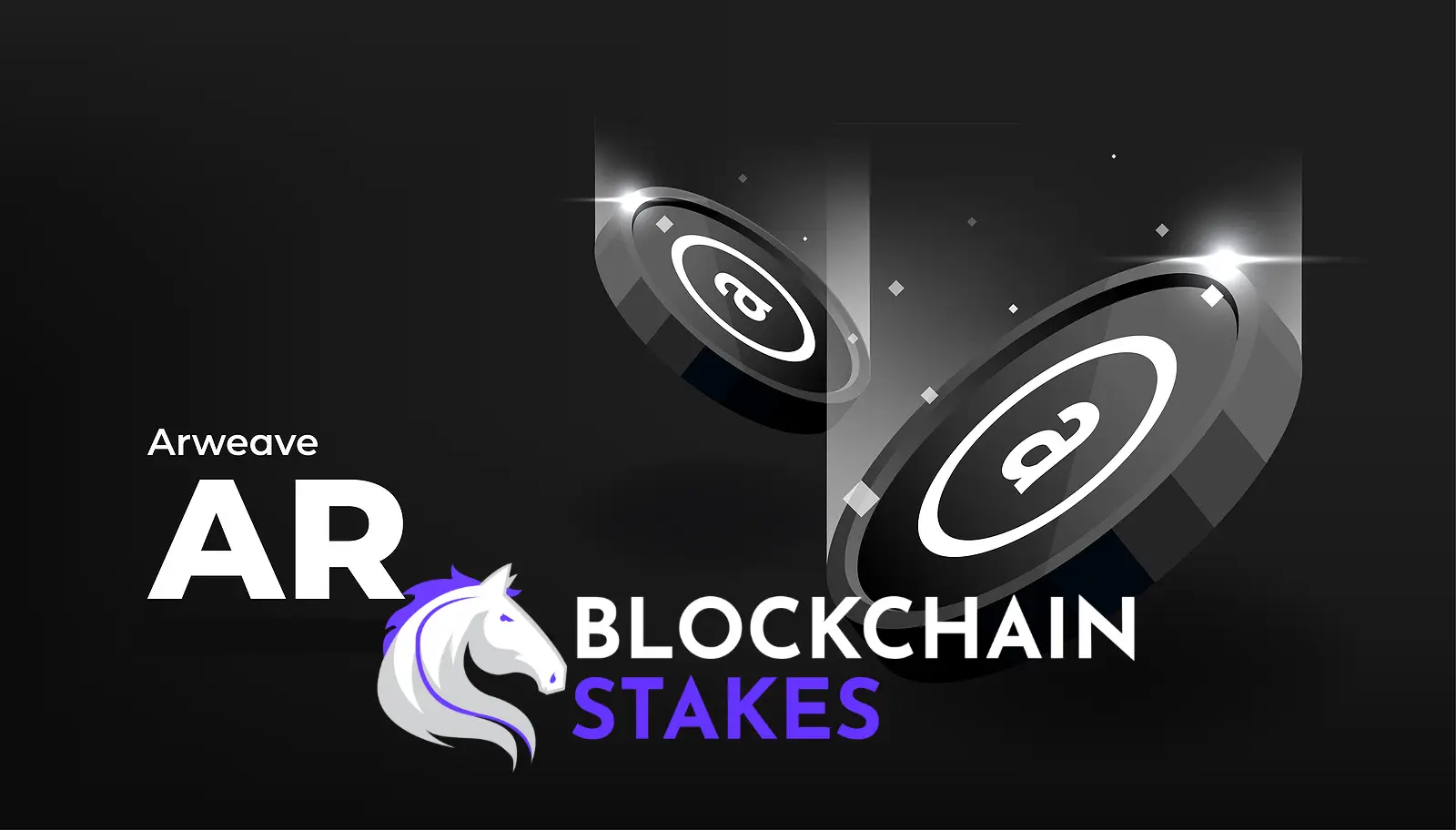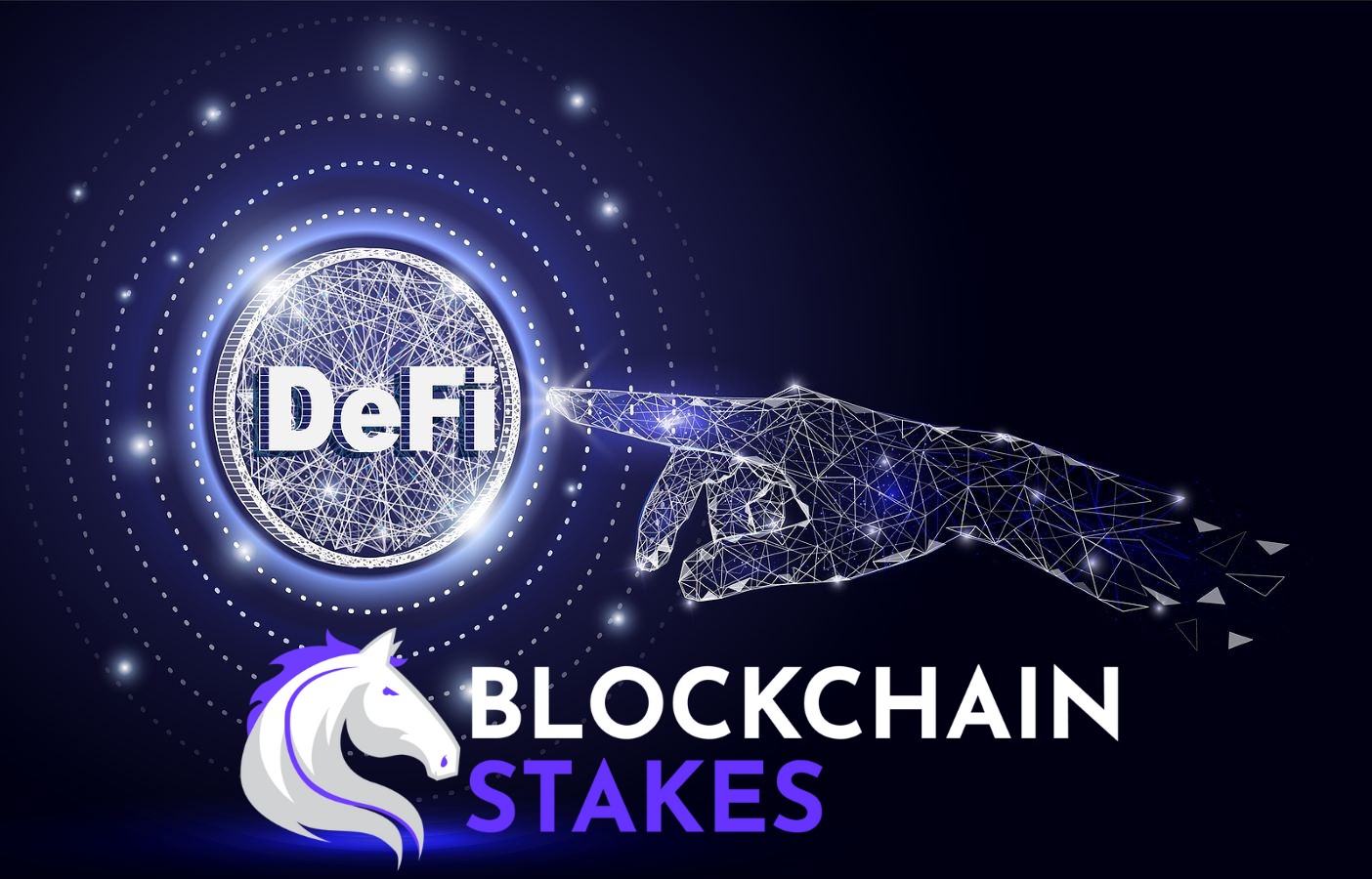Introduction
In the landscape of blockchain technology, decentralized data storage has emerged as a revolutionary concept, promising to transform how we store, access, and manage data. Among the pioneering projects in this domain is Arweave, a blockchain-based network that offers permanent and censorship-resistant data storage. Arweave introduces innovative solutions that address the limitations of traditional blockchains and centralized storage systems, making it a compelling choice for developers, businesses, and individuals alike.
This post will take you on an in-depth exploration of the Arweave ecosystem. We will delve into the unique blockweave architecture that underpins Arweave, the vital role of the AR coin, the groundbreaking Proof of Access consensus mechanism, and the creation of the Permaweb—a decentralized and permanent web. By the end of this post, you’ll have a comprehensive understanding of how Arweave works and its potential to reshape the future of data storage and the internet as we know it.
Understanding Arweave
What is Arweave?
Arweave is a decentralized data storage network that aims to provide permanent and censorship-resistant storage solutions. Unlike traditional blockchain systems that primarily focus on recording transactions, Arweave is designed to store data indefinitely, ensuring its availability and immutability. This makes it an attractive option for applications that require long-term data preservation, such as archives, digital libraries, and persistent web content.
At its core, Arweave offers a platform where users can store data permanently by paying a one-time fee. This fee is paid in Arweave’s native cryptocurrency, AR, and covers the costs associated with storing data on the network for over 200 years. This approach eliminates the recurring subscription fees typical of traditional cloud storage services, providing a cost-effective and sustainable solution for long-term data storage.
The Blockweave Architecture
One of the standout features of Arweave is its unique data structure known as the “blockweave.” While traditional blockchains link each block to its immediate predecessor, forming a linear chain, the blockweave introduces a more complex and robust structure.
In the blockweave, each new block is linked to the previous block as well as a randomly selected historical block called the “recall block.” This dual-linking mechanism incentivizes miners to store and replicate historical data to participate in mining new blocks. Here’s how it works:
- Previous Block Link: Similar to traditional blockchains, each block in the blockweave is linked to its immediate predecessor. This ensures the continuity and integrity of the chain.
- Recall Block Link: Each block is also linked to a randomly selected historical block. This recall block is chosen from any point in the blockchain’s history, requiring miners to have access to a broad range of historical data to mine new blocks.
This innovative architecture not only enhances the security and resilience of the network but also ensures that historical data is consistently replicated and accessible. By requiring miners to reference past data, the blockweave creates a strong incentive for the preservation and distribution of data across the network, ensuring its permanence.
Key Features of Arweave Blockchain
- Proof of Access (PoA): Arweave employs a consensus mechanism called Proof of Access (PoA), which differs significantly from the more common Proof of Work (PoW) and Proof of Stake (PoS) mechanisms. In PoA, to mine a new block, miners must provide cryptographic proof that they can access the randomly selected recall block from the network’s history. This ensures that miners are storing historical data, promoting long-term data preservation and replication.
- Permanent Data Storage: The primary goal of Arweave is to provide a platform for permanent data storage. Users pay an upfront fee in AR tokens to store data indefinitely on the network. The fees collected are distributed to miners who are responsible for replicating and storing the data, ensuring that it remains accessible and unaltered over time.
- Permaweb: Built on top of the blockweave data structure, the Permaweb is a decentralized and permanent web. It enables the hosting and accessing of websites, applications, and data without the risk of censorship or removal. The Permaweb leverages the inherent permanence and immutability of the blockweave to create a reliable and enduring web ecosystem.
- Content Policies: Unlike traditional blockchains that store all data indiscriminately, Arweave allows miners to set their own content policies. These policies enable miners to decide which data they want to store based on their preferences or legal requirements. Data that violates a miner’s policy will not be accepted into their transaction pool, offering a flexible approach to data storage that accommodates various legal and ethical considerations.
Arweave is a groundbreaking blockchain protocol specifically designed for permanent and decentralized data storage. Its innovative blockweave architecture and Proof of Access consensus mechanism ensure the perpetual availability and integrity of stored data, while the Permaweb provides a robust platform for hosting uncensorable and permanent web content. Together, these features position Arweave as a leader in the next generation of blockchain technology, offering unique solutions to the challenges of data permanence and decentralization.
The Role of AR Coin in the Arweave Ecosystem
Introduction to AR Coin
The AR coin is the native cryptocurrency of the Arweave network, playing a crucial role in its functioning and sustainability. It is the primary medium of exchange within the ecosystem, facilitating various transactions and activities, including data storage payments and miner incentives. By integrating AR coin into its architecture, Arweave ensures that the network remains decentralized, secure, and incentivized for long-term data preservation.
Data Storage Fees
One of the defining features of Arweave is its approach to data storage fees. Users who wish to store data on the Arweave network must pay an upfront fee in AR coins. This one-time payment covers the cost of storing data permanently, eliminating the need for recurring subscription fees that are common with traditional cloud storage services. The amount of AR required for storage is proportional to the size of the data being stored, making it a scalable and predictable model for users.
The fee structure is designed to be sustainable over the long term. A portion of the fee is allocated to an endowment that ensures the continuous availability and replication of data for over 200 years. This endowment model is crucial in maintaining the network’s promise of permanent storage, as it guarantees that sufficient resources are available to support data preservation far into the future.
Miner Incentives
Miners play a vital role in the Arweave ecosystem by providing the computational resources necessary for data storage and network maintenance. To incentivize their participation, Arweave has designed a reward system where miners earn AR coins. This system not only motivates miners to contribute to the network but also ensures its decentralization and robustness.
Here’s how the incentive mechanism works:
- Proof of Access (PoA): Miners are required to provide cryptographic proof that they can access randomly selected historical data blocks (recall blocks) to mine new blocks. Successfully doing so rewards them with newly minted AR coins.
- Distribution of Fees: A portion of the AR coins paid by users for data storage is distributed to miners. This ensures that miners are continuously incentivized to store and replicate data over the long term.
This dual reward system—earning AR coins through PoA and receiving a share of storage fees—encourages miners to maintain the entire historical data of the network, thereby ensuring data permanence and availability.
Network Security
The AR coin is integral to the security of the Arweave network. Through the Proof of Access consensus mechanism, miners must demonstrate their ability to access and store historical data blocks. This requirement not only ensures the authenticity and integrity of the data but also enhances the network’s security in several ways:
- Deterring Malicious Actors: By requiring miners to provide Proof of Access, the network makes it costly and difficult for malicious actors to participate. This reduces the risk of attacks aimed at corrupting or censoring data.
- Decentralized Validation: The random selection of recall blocks ensures that no single miner can gain an undue advantage by selectively storing data. This decentralized approach to data validation and storage enhances the overall security and resilience of the network.
The AR coin is the lifeblood of the Arweave ecosystem, enabling permanent data storage, incentivizing miners, and securing the network. By integrating a robust economic model centered around AR coins, Arweave ensures that its decentralized storage network remains sustainable, secure, and efficient, paving the way for a new era of immutable and censorship-resistant data storage.
Proof of Access (PoA) Mechanism
What is Proof of Access?
Proof of Access (PoA) is a unique consensus mechanism employed by Arweave that fundamentally differs from the more commonly known Proof of Work (PoW) and Proof of Stake (PoS) mechanisms. Designed to ensure the long-term preservation of data, PoA requires miners to prove they can access and retrieve historical data stored on the network. This approach not only secures the network but also incentivizes the continuous storage and replication of data, making it a cornerstone of Arweave’s mission to provide permanent data storage.
How PoA Works
The Proof of Access mechanism involves several key steps that ensure the integrity and permanence of the data stored on the Arweave network:
Random Data Selection:
- When a miner wants to mine a new block, the network randomly selects a previous block from the network’s history, known as the “recall block.”
- This recall block contains specific data that the miner must access and provide proof of.
Proof of Access:
- The miner must provide cryptographic proof that they can access and retrieve the data contained in the randomly selected recall block.
- This proof is known as the “Proof of Access” and is a critical requirement for mining a new block.
Block Generation:
- After successfully providing the Proof of Access, the miner can generate a new block and include it in the blockweave data structure.
- The new block is linked not only to the previous block but also to the recall block, reinforcing the network’s historical data.
Incentives:
- Miners who successfully mine a new block by providing the Proof of Access are rewarded with newly minted AR tokens.
- This incentive mechanism encourages miners to store and maintain as much historical data as possible, increasing their chances of being selected to mine new blocks.
Advantages of PoA
The Proof of Access mechanism offers several significant advantages that contribute to the robustness and efficiency of the Arweave network:
- Data Permanence:
- By requiring miners to provide access to historical data, PoA ensures that data is consistently replicated and preserved across the network.
- This continuous replication and access guarantee the permanence and availability of data, fulfilling Arweave’s promise of long-term storage.
- Energy Efficiency:
- Unlike Proof of Work, which requires extensive computational power to solve complex puzzles, Proof of Access is more energy-efficient.
- Miners do not need to perform resource-intensive calculations, making PoA a more sustainable and eco-friendly consensus mechanism.
- Decentralization:
- The random selection of recall blocks from the network’s history prevents any single miner from gaining an advantage by storing only a subset of the data.
- This approach promotes decentralization by ensuring that all miners must store a wide range of historical data to participate in the mining process.
Ensuring Network Integrity
The PoA mechanism plays a crucial role in maintaining the integrity and security of the Arweave network. By requiring miners to access historical data, PoA deters malicious actors from participating and attempting to corrupt or censor data. Additionally, the economic incentives provided through AR token rewards motivate miners to continuously store and validate data, further reinforcing the network’s stability and reliability.
The Proof of Access mechanism is a groundbreaking consensus algorithm designed specifically for the Arweave blockchain. By incentivizing miners to store and maintain the entire network’s historical data through a random data selection and verification process, PoA ensures data permanence, energy efficiency, and decentralization. This innovative approach not only secures the network but also aligns with Arweave’s mission to provide a sustainable and permanent data storage solution.
The Permaweb
Introduction to the Permaweb
The Permaweb is one of the most innovative and transformative features of the Arweave ecosystem. It represents a decentralized, permanent web built on top of the blockweave data structure. Unlike the traditional web, where data can be altered, deleted, or censored, the Permaweb ensures that websites, applications, and data remain immutable and accessible indefinitely. This section will explore the structure, functionality, and significance of the Permaweb in the Arweave ecosystem.
How the Permaweb Works
The Permaweb leverages the underlying blockweave architecture of Arweave to create a robust and enduring web layer. Here’s how it functions:
Data Storage on the Blockweave:
- All data, including website content, applications, and multimedia files, are stored on the blockweave.
- Each piece of data is assigned a unique identifier and is permanently recorded in the blockweave, ensuring its immutability.
Permanent URLs:
- Data stored on the Permaweb is accessible through permanent URLs. These URLs are directly linked to the data’s unique identifier within the blockweave.
- Once a URL is created, the content it points to remains unchanged and accessible forever, providing a reliable way to reference data over the long term.
Decentralized Hosting:
- Unlike traditional web hosting, where content is stored on centralized servers, the Permaweb distributes data across a decentralized network of nodes.
- This decentralized approach ensures that data is always available, even if some nodes go offline, and prevents any single entity from controlling or censoring the content.
Access via Standard Web Browsers:
- The Permaweb can be accessed using standard web browsers, making it user-friendly and easily adoptable.
- Users can browse websites, interact with applications, and retrieve data stored on the Permaweb just as they would on the traditional web, but with the added benefits of permanence and immutability.
Key Benefits of the Permaweb
The Permaweb offers several advantages over the traditional web, addressing some of its most pressing challenges:
- Censorship Resistance:
- The decentralized nature of the Permaweb makes it resistant to censorship. Once data is stored, it cannot be altered or removed by any single party, ensuring freedom of information and expression.
- This feature is particularly valuable for journalists, activists, and organizations operating in environments where censorship is prevalent.
- Data Integrity:
- The immutability of the Permaweb ensures that data remains unchanged over time, providing a reliable record of information.
- This integrity is crucial for preserving historical records, academic research, and any data that requires long-term reliability.
- Long-Term Accessibility:
- With the Permaweb, users can be confident that the data they store will remain accessible for generations. The permanent URLs ensure that content can always be retrieved, providing a stable and enduring web experience.
- This long-term accessibility is beneficial for digital archives, libraries, and any project that values the longevity of its data.
Use Cases of the Permaweb
The Permaweb opens up a wide range of possibilities for various applications:
- Decentralized Applications (dApps):
- Developers can build decentralized applications on the Permaweb, taking advantage of its permanent storage and censorship resistance.
- dApps can provide users with transparent, secure, and immutable services, enhancing trust and reliability.
- Archival and Preservation:
- The Permaweb is an ideal platform for digital archiving and preservation efforts. Historical documents, cultural artifacts, and other valuable data can be stored permanently, ensuring they are protected against loss and tampering.
- Libraries, museums, and archives can use the Permaweb to safeguard digital records for future generations.
- Content Publishing:
- Content creators, including bloggers, journalists, and artists, can publish their work on the Permaweb, guaranteeing its availability and protection from censorship.
- This permanence offers creators a new level of control and security over their content.
The Permaweb is a revolutionary development in the Arweave ecosystem, providing a decentralized and permanent web layer that addresses many of the limitations of the traditional web. By ensuring data immutability, censorship resistance, and long-term accessibility, the Permaweb offers a powerful platform for a wide range of applications, from digital archiving to decentralized application development. As part of the Arweave network, the Permaweb exemplifies the potential of blockchain technology to create a more resilient and equitable digital future.
Key Takeaways
Arweave represents a significant advancement in the field of blockchain technology and decentralized data storage. By introducing the innovative blockweave architecture and the unique Proof of Access (PoA) consensus mechanism, Arweave addresses some of the most pressing challenges in data storage, including permanence, security, and decentralization.
The role of the AR coin within the ecosystem is pivotal. It facilitates a sustainable economic model that incentivizes miners to maintain the integrity and availability of data, ensuring that once data is stored on the Arweave network, it remains there indefinitely. This upfront fee structure, coupled with long-term incentives, provides a robust framework for continuous data preservation.
The Proof of Access mechanism, with its requirement for miners to access historical data, ensures that data is not only stored but also actively maintained and validated. This approach deters malicious actors and enhances the network’s overall security and resilience.
The Permaweb extends the capabilities of the Arweave network, creating a decentralized and permanent web layer where websites, applications, and data can exist free from censorship and alteration. This feature opens up new possibilities for a range of applications, from digital archiving and content publishing to the development of decentralized applications (dApps).
In summary, Arweave is not just a blockchain but a paradigm shift in how we think about data storage and web infrastructure. By ensuring data permanence, fostering a decentralized ecosystem, and providing tools for a censorship-resistant web, Arweave is paving the way for a new era of digital permanence and freedom. Whether you are a developer, content creator, or simply someone concerned about the longevity and integrity of your digital footprint, Arweave offers a compelling solution that is both innovative and future-proof.

















